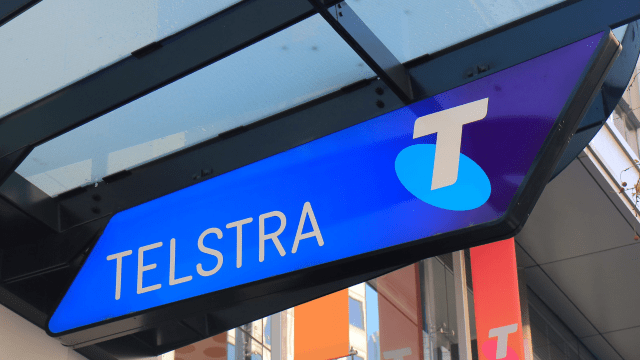The U.S. and Japan have invested about $73 million each (in credit guarantees) in Telstra’s purchase of Digicel Pacific, the largest telecommunications company in the Pacific region.
Digicel Pacific services Fiji, Nauru, Papua New Guinea, Samoa, Tonga and Vanuatu with its phone network. Now, after being purchased by Telstra back in July, Japan and the U.S. have thrown their weight behind it.
Oh, INTERESTING. It will get crowded out by the Xi-Albanese meeting etc. But Japan and the US have just announced at the G20 that they’re throwing $100 million USD (in credit guarantees) into finance for Telstra’s purchase of Digicel Pacific… pic.twitter.com/DYQjWHvcl6
— Stephen Dziedzic (@stephendziedzic) November 15, 2022
At the G20 Summit, it was announced that the United States International Development Finance Corporation and the Japan Bank for International Cooperation will each provide $US50 million (about $73 million in Australian dollars) in credit guarantees for Telstra’s acquisition of Digicel Pacific. Back in July, Telstra completed its purchase of Digicel Pacific, the largest telecommunications company in the pacific. The purchase was completed for $2.4 billion, with the Australian government contributing $1.78 billion and Telstra contributing $360 million.
The Digicel Pacific acquisition explained
Telstra put $US270 million (around $360 million) toward the Digicel Pacific purchase, while the Australian government contributed $US1.33 billion (around $1.78 billion), to a total of $US2.1 billion (around $2.4 billion).
“The Australian government’s support for this transaction reflects our commitment to help build a stronger Pacific family through investment in high-quality infrastructure,” said the Minister for Foreign Affairs, Senator Penny Wong, at the time.
“Telecommunications and digital access are critical to sustainable economic growth and development outcomes into the future.”
The acquisition began in October 2021, when it was planned that Telstra would hold all the equity.
“We are very pleased the deal has completed and we welcome Digicel Pacific to the Telstra family,” said Andrew Penn, the CEO of Telstra, at the time.
“We have been working closely with Pacific Governments on this acquisition and we’d like to thank them for their cooperation and support. We look forward to continuing to work with them as we operate Digicel Pacific and strengthen our relationships in the region.”
This deal was about more than money. It’s about making sure China doesn’t get a foothold in the communications infrastructure of Pacific island nations, at least that’s according to an Australian foreign policy expert.
Digicel Pacific was a subsidiary of Digicel, founded by Irish billionaire Denis O’Brien in 2001, which also has a huge presence in Caribbean island nations. Digicel Pacific operates in six countries in the South Pacific, including Fiji, Nauru, Papua New Guinea, Samoa, Tonga and Vanuatu. The company is largely dependent on Huawei 4G infrastructure in the Pacific and hasn’t made a transition yet to 5G.
China Mobile had previously expressed interest in buying Digicel Pacific, leading to a big push from the Australian government to keep Chinese telecom companies out of the region, even if that won’t be admitted to just yet. A spokesperson for the Department of Foreign Affairs and Trade last year, when the deal was announced, denied to other news outlets that the deal had to do with countering China, telling the Sydney Morning Herald, “this isn’t about any one other country”.
But that’s not how experts on the region see it. In fact, the deal only makes sense if you approach it from the perspective of the New Cold War.
“Australian businesses have been in retreat in the Pacific,” Jonathan Pryke, director of the Pacific Islands Program at the Australian think tank the Lowy Institute, told Gizmodo in October, when the deal was first announced. “But Australia is now stepping up its own engagement.
“In a 5G world, financial services and infrastructure like power are all connected.”
If China had control over telecom capabilities in the South Pacific, “it would give China access to information but also the ‘finger over the switch’ to disrupt these economies.”
Those same “finger over the switch” concerns have kept Chinese companies like Huawei from bidding on lucrative telecom infrastructure contracts in the United States. In a potential worst-case scenario, U.S. policymakers don’t want to give Chinese companies the ability to turn the lights on and off — both figuratively and literally.
As the Sydney Morning Herald notes, China has spent billions in recent years on infrastructure projects in the South Pacific:
While Australia has long been the dominant provider of foreign aid in the region, Beijing has led the way in providing cheap loans to bankroll infrastructure projects. China was responsible for 37 per cent of all donor loans to the Pacific between 2011 and 2017, funding projects with a total value of about $US1.7 billion [around $2 billion].
But as Pryke explains, the deal to buy Digicel Pacific is larger than any given foreign aid project financed by Australia in any single year. And while the government certainly hopes to make some money on this deal, it’s worth so much more through the projection of economic and cultural power.
“If you want to understand the geostrategic implications, have a look at the second world war,” Pryke told Gizmodo.
The U.S. and its allies, including Australia, used islands in the South Pacific to ferry soldiers and supplies during World War II in the fight against Imperial Japan. These same 14 states and territories that make up the major South Pacific island nations would be just as instrumental in fighting any hypothetical battles against China and its allies if the New Cold War ever turned hot.
In the end, Pryke isn’t against the deal for Digicel Pacific, but he obviously has his reservations about what it means for the future.
“I’m optimistic, but it’s not without risk for the Australian taxpayer” Pryke said.
This article has been updated since it was originally published.
